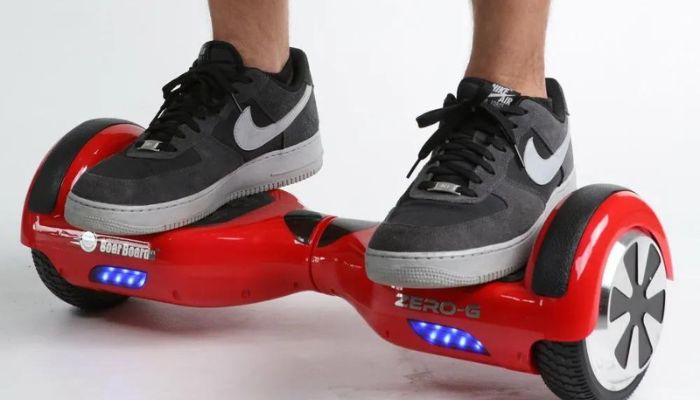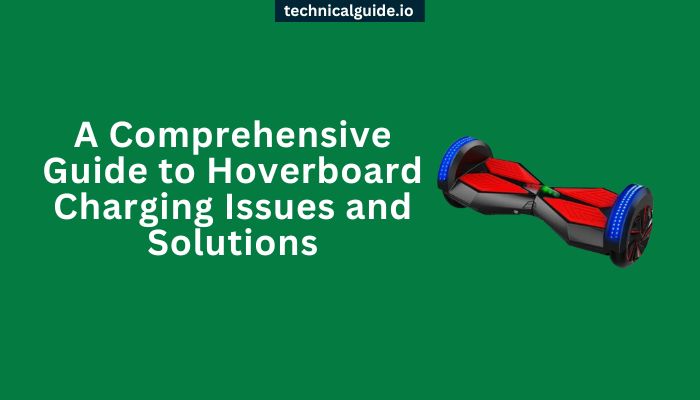In the ever-evolving world of personal transportation, hoverboards have become a popular choice for enthusiasts of all ages. These futuristic, self-balancing devices promise a smooth and enjoyable ride, but like any electronic gadget, they are not immune to technical glitches. One of the most common concerns that hoverboard owners face is the issue of charging. In this comprehensive blog post, we will delve into the intricacies of hoverboard charging mechanisms, exploring the common causes behind charging problems and providing practical solutions to troubleshoot and fix them. Additionally, we will discuss preventive measures to ensure the longevity of your hoverboard’s battery life.
Background: Hoverboards and Their Charging Mechanisms:
Before we embark on the troubleshooting journey, let’s take a moment to understand the basics of hoverboards and how their charging mechanisms work. Hoverboards, also known as self-balancing scooters, typically rely on rechargeable lithium-ion batteries to power their electric motors. The charging process involves connecting the hoverboard to a compatible charger, which transfers electrical energy to the batteries. A fully charged hoverboard can cover a certain distance, depending on factors like battery capacity and usage.
Common Causes of Hoverboard Not Charging:
Damaged Batteries
One of the primary reasons for hoverboards failing to charge is damaged batteries. Over time, batteries can degrade, leading to a reduced capacity and the inability to hold a charge.
Faulty Chargers
Using a charger that is not compatible with your hoverboard can result in charging issues. Additionally, chargers can become faulty due to wear and tear, impacting their ability to deliver a consistent charge.
Loose Connections
A loose connection between the charging port and the internal components of the hoverboard can disrupt the charging process. This can occur due to physical damage or poor manufacturing.
Overheating
Hoverboards generate heat during operation, and excessive heat can lead to overheating issues. Overheating may cause the hoverboard’s safety features to disable charging to prevent further damage.
Software Glitches
Just like any electronic device, hoverboards can experience software glitches that may interfere with the charging process. These glitches could be due to bugs in the firmware or other software-related issues.
How To Troubleshoot And Fix Hoverboard Not Charging Issues
Replacing Damaged Batteries
If your hoverboard’s batteries are damaged or no longer hold a charge, it may be necessary to replace them. Consult your hoverboard’s user manual or contact the manufacturer for information on compatible replacement batteries.
Using The Original Charger
Always use the original charger that came with your hoverboard. Using an incompatible charger can lead to charging problems and may even damage the batteries. If your original charger is lost or damaged, purchase a certified replacement from the manufacturer.
Checking Connections
Inspect the charging port and cable for any physical damage. Ensure that the charging port is clean and free from debris. If there are loose connections, consider seeking professional repair services or, if confident, carefully reconnecting the components.
Cooling The Hoverboard
Overheating can be addressed by allowing the hoverboard to cool down before attempting to charge it again. Please avoid using the hoverboard for extended periods in hot conditions and store it in a well-ventilated area.
Addressing Software Issues
If you suspect software issues, check for any available firmware updates for your hoverboard model. Follow the manufacturer’s instructions to update the firmware, which may resolve software-related glitches affecting the charging process.

How To Prevent Hoverboard Not Charging Issues In The Future
Regular Charging Routine
Establish a regular charging routine for your hoverboard. Avoid letting the battery drain completely before recharging to prolong its lifespan.
Proper Storage
Store your hoverboard in a cool, dry place when not in use. Exposure to extreme temperatures or humidity can adversely affect battery performance.
Avoid Overcharging
Overcharging can damage the batteries and reduce their overall lifespan. Unplug the hoverboard once it is fully charged, and avoid leaving it connected to the charger for extended periods.
Use a Surge Protector
Protect your hoverboard from voltage fluctuations by using a surge protector. This can safeguard the charging circuit and prevent potential damage during electrical surges.
What Is the Warranty Period of Hoverboards?
The warranty period for hoverboards can vary depending on the brand and model, as well as the specific terms and conditions set by the manufacturer. In general, hoverboards typically come with a warranty that lasts anywhere from 90 days to 1 year. Some high-end or premium models might offer longer warranty periods, extending up to 2 years or more.
It’s crucial to carefully review the warranty information provided by the manufacturer before purchasing a hoverboard. The warranty typically covers manufacturing defects and malfunctions but may not extend to damage caused by misuse, accidents, or normal wear and tear.
Keep in mind that warranty details can change, and different manufacturers may have different policies. Always refer to the warranty documentation provided with your specific hoverboard for accurate and up-to-date information. If you have questions about the warranty for a particular hoverboard, it’s a good idea to contact the manufacturer or check their official website for the most accurate and current information.
Conclusion
In the fast-paced world of personal transportation, hoverboards offer a unique and exciting way to navigate the urban landscape. However, ensuring the longevity and optimal performance of your hoverboard requires attention to its charging mechanisms. By understanding the common causes of charging issues and implementing practical troubleshooting steps, you can keep your hoverboard running smoothly.
Remember, proactive measures such as regular charging, proper storage, and using the original charger contribute significantly to the overall health of your hoverboard’s battery. By incorporating these practices into your routine, you can minimize the risk of encountering charging issues and maximize the enjoyment of your hoverboarding experience.
We hope this comprehensive guide has provided valuable insights into diagnosing and resolving hoverboard charging problems. We invite you to share your feedback and experiences in the comments below. Have you encountered charging issues with your hoverboard, and if so, how did you address them? Let’s build a community of hoverboard enthusiasts sharing knowledge and tips to enhance the riding experience for everyone. Happy riding!
FAQs (Frequently Asked Questions):
1. What Is The Average Lifespan Of A Hoverboard Battery?
The lifespan of a hoverboard battery can vary based on factors such as usage, battery quality, and maintenance. On average, a hoverboard battery can last between 2 and 4 years. Regular charging habits, avoiding overcharging, and proper storage contribute to maximizing battery life.
2. Can I Use a Third-Party Charger for My Hoverboard?
It is not recommended to use a third-party charger for your hoverboard. Using an incompatible charger may lead to charging issues, damage the battery, and void the warranty. Always use the original charger provided by the manufacturer or a certified replacement.
3. Why Does My Hoverboard Overheat During Use?
Hoverboards can overheat due to prolonged use, high ambient temperatures, or internal issues. Overheating can trigger safety mechanisms that temporarily disable charging. Allow the hoverboard to cool down before attempting to charge again. Avoid using it for extended periods in hot conditions.
4. What Should I Do If My Hoverboard Is Still Not Charging After Troubleshooting?
If your hoverboard continues to experience charging issues after troubleshooting, it’s advisable to contact the manufacturer’s customer support for assistance. They can provide guidance on potential solutions or direct you to authorized service centers for further evaluation and repair.
5. Is It Normal For My Hoverboard’s Battery Indicator To Fluctuate During Use?
Minor fluctuations in the battery indicator are normal during usage, especially when the hoverboard is under heavy load. However, if you notice significant and consistent fluctuations, it may indicate a potential issue with the battery or the hoverboard’s electrical system. In such cases, it’s recommended to seek professional assistance for diagnosis and repair.
